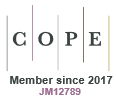Parasites of estuarine and oceanic flathead fishes (Family Platycephalidae) from northern New South Wales
JNA Hooper
Australian Journal of Zoology Supplementary Series
31(90) 1 - 69
Published: 1983
Abstract
Two cestodes, nine nematodes, five acanthocephalans, seven digeneans, two isopods and a copepod were recorded from approximately 200 flathead fishes, of seven species, from the north coast of New South Wales during 1977–79, from estuaries to depths of 300 m. Descriptions are given of two new species of nematodes (Raphidascaroides fisheri, sp. nov., and Spirocamallanus platycephali, sp. nov.) one new acanthocephalan (Rhadinorhynchus bicircumspinis, sp. nov.), female of an unknown Raorhynchus sp., larvae of Raphidascaris or Raphidascaroides and Echinocephalus spp.. and digeneans of Lecithochirium sp, and Cryptogonimidae. New host and/or locality records are given for female Philometra pellucida, a male Cucullanus armatus, digeneans Erilepturus platycephali, Erilepturus sp.. Aponurus laguncula, Didymozoon brevicolle, Prosorhynchus tsengi, the copepod Pterochondria alatalongicollis, isopods Nerocila laticauda, Codonophilus imbricatus, and larval species of Aybelinia, Anisakis (I), Thynnascaris (III and IV): Serrasentis sagiftifer, Gorgorhynchus celebesensis, Corynosoma clavatum and a phyllobothrid cestode. Parasites were used as biological indicators of their hosts' habitat, feeding behaviour and trophic level; ecological specificity was important for parasite infection in flathead fishes. Macrohabitat distributions of hosts, as shown by diet and locality. was also important to parasite species; parasite faunas of estuarine P. fuscus and oceanic P. bassensis contrasted markedly. In P. bassensis, populations of all parasites except P. pellucida were overdispersed (clumped); host age seemed the most significant contributory factor. Some species of parasite, e.g. digeneans, were site-specific but others (most larval species) were distributed over large areas of the gut showing considerable overlap. The effects of P. pellucida upon its habitat (the gonads) were examined briefly, and some aspects of this worm's ecology were investigated.https://doi.org/10.1071/AJZS090
© CSIRO 1983


